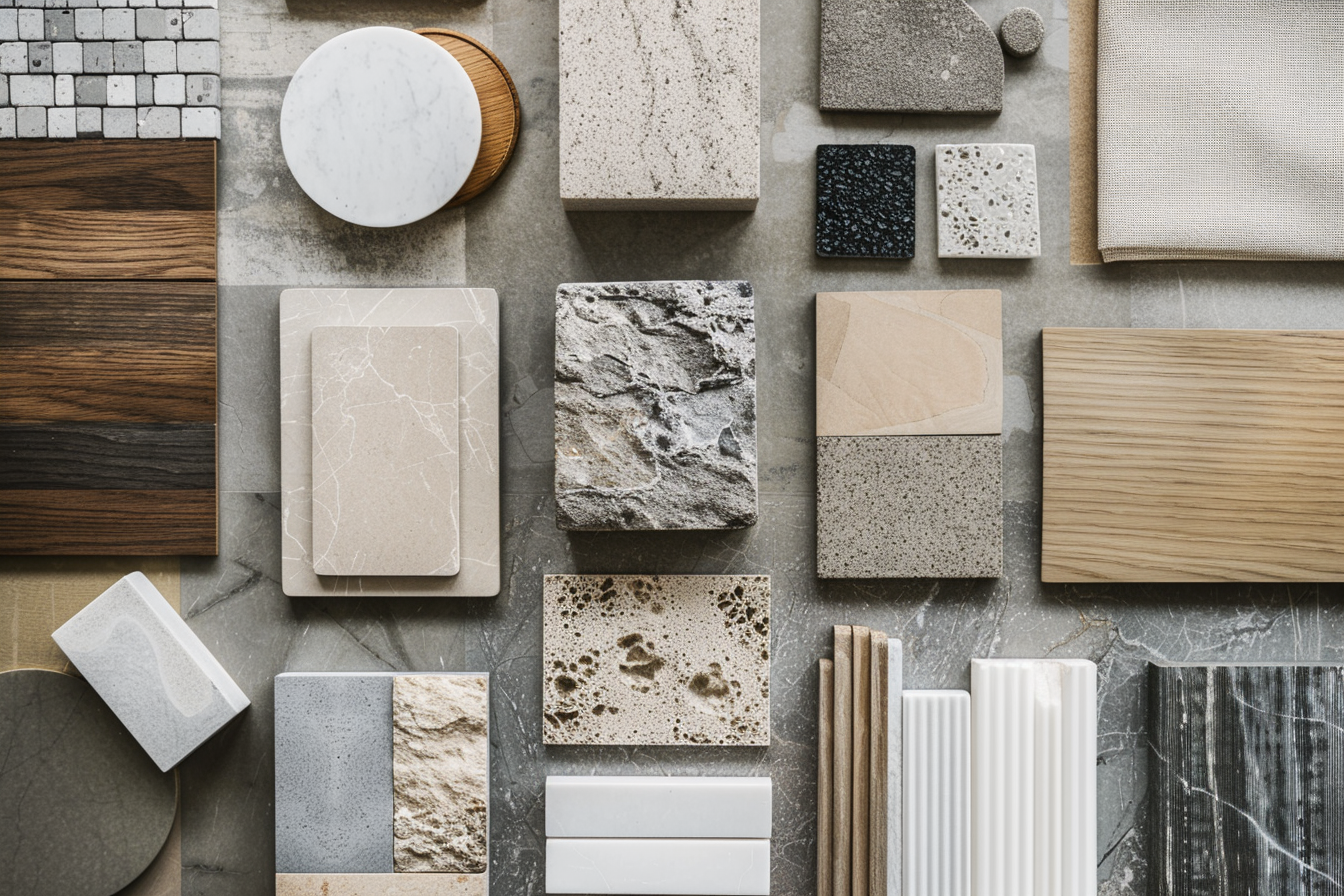Material Selection for Interiors

1. Introduction
Material selection is a foundational aspect of interior design and interior architecture, shaping the visual, tactile, acoustic, and environmental quality of interior spaces. For recent architecture graduates entering the professional world, understanding how to evaluate materials based on performance, aesthetics, and maintenance is essential for delivering functional, sustainable, and visually compelling spaces. This article explores the multifaceted criteria for choosing interior materials and offers practical guidance to bridge the gap between academic knowledge and real-world application.
2. The Role of Materials in Interior Environments Interior materials do more than just define the appearance of a space; they influence how it feels, how it ages, and how it performs under different conditions.
- Performance: Includes durability, acoustic properties, thermal resistance, fire resistance, slip resistance, and environmental impact.
- Aesthetics: Color, texture, finish, and how materials interact with light and form.
- Maintenance: Cleanability, resistance to wear and tear, longevity, and cost of upkeep.
Pro Tip : Always request technical data sheets from suppliers. These contain critical specifications that often reveal limitations not visible in showrooms.
3. Categories of Interior Materials
a. Flooring Materials
- Options: Wood, stone, tile, concrete, carpet, vinyl, laminate
- Key Factors: Traffic levels, moisture exposure, acoustic dampening, slip resistance
- Example: The Neue Nationalgalerie in Berlin uses polished stone flooring that is both visually minimal and highly durable.
Red Visual Aid Suggestion: Comparative table of flooring types and their ideal uses based on durability, cost, and acoustics.
b. Wall Finishes
- Options: Paint, wallpaper, wood panels, acoustic panels, tiles, fabric
- Considerations: Light reflectance, tactile experience, ease of cleaning
Pro Tip : Avoid high-gloss finishes in high-traffic public spaces—they show fingerprints and scuff marks more easily.
c. Ceiling Materials
- Options: Gypsum board, metal panels, timber slats, acoustic tiles
- Performance Considerations: Sound absorption, ease of installation, service access
d. Fixtures and Millwork
- Built-in cabinetry, shelving, and furniture should be designed with ergonomics, material longevity, and modularity in mind.
4. Performance-Based Selection Criteria Each project context demands specific material performance criteria:
- Fire Safety Codes: Use Class A-rated materials in corridors and exits.
- Acoustics: Materials like cork, acoustic gypsum, or fabric panels can help mitigate sound transfer.
- Thermal Comfort: Reflective vs. absorptive surfaces affect passive heating/cooling.
- Indoor Air Quality: Choose low-VOC (Volatile Organic Compounds) finishes.
Pro Tip : Use mock-ups in the actual lighting conditions of a space to see how materials truly behave.
5. Aesthetic Strategy and Cohesion Interior spaces require materials that align with the architectural language of the building and the psychological intent of the design.
- Visual Hierarchy: Use texture and color to highlight focal areas and define zones.
- Cultural Relevance: Materials like terra cotta, bamboo, or local stone can reflect local identity.
- Light Interaction: Translucent glass, metallic finishes, and matte vs. gloss choices affect perception.
Pro Tip : Always consider how artificial and natural light will interact with selected materials over a full day cycle.
6. Maintenance and Lifecycle Costing Maintenance can significantly impact a project's long-term cost and user satisfaction.
- Lifecycle Thinking: Invest in durable materials where replacement is costly (e.g., flooring, kitchen surfaces).
- Ease of Repair: Modular ceiling tiles or removable wall panels simplify maintenance.
- Cleaning Regimes: Hospitals or schools may require antimicrobial surfaces.
7. Case Studies
Case Study 1: The Edge, Amsterdam (Interior by PLP Architecture)
- Application: Use of intelligent systems to manage interior climate and lighting conditions.
- Material Insight: Adaptive lighting, recycled wood, and fabric panels provide both sustainability and low-maintenance design.
Case Study 2: Maggie’s Centre, Dundee (by Frank Gehry)
- Application: Use of natural materials to create a healing environment.
- Material Insight: Timber and stone, chosen for their warmth and tactile qualities, support emotional well-being and require minimal chemical treatment.
8. Conclusion The selection of interior materials is a multi-layered process that involves technical understanding, visual awareness, and future-oriented thinking. For recent graduates, mastering this skill means gaining fluency in material performance, aligning choices with design intent, and making pragmatic decisions that serve both clients and users. With strategic, informed material choices, interior architecture becomes more sustainable, resilient, and human-centered—core values for future-ready design professionals.
Pro Tip : Establish a sample library early in your career. Organize it by application and performance to streamline future decision-making.